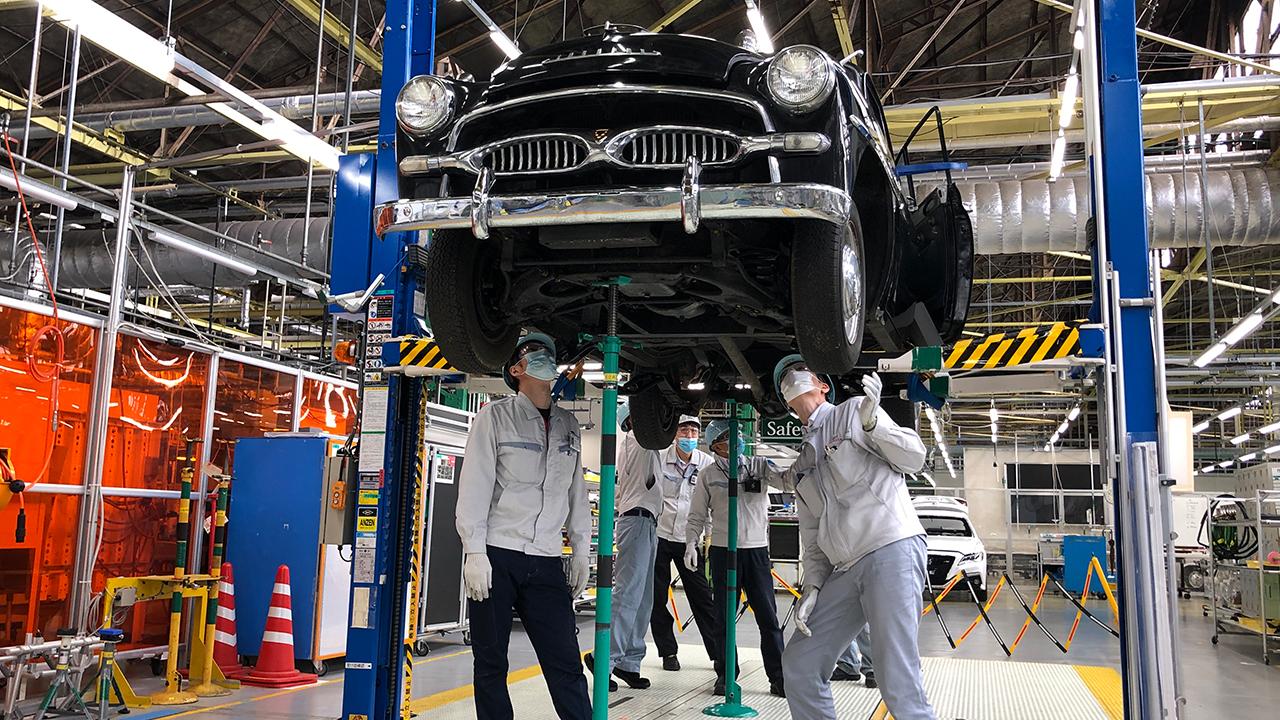
This series explores the project to restore a first-generation Crown, a car that embodies Toyota's origins. Part 3 covers the checking and disassembly work as the first stage of restoration.

A project to restore a first-generation Crown started in the spring of 2022 at the Motomachi Plant, bringing together a diverse group of skilled members. This series closes in on those restoration efforts, and in this article, we see how the restoration work finally got underway in the first phase of the project.
An owner’s passion for Toyota and the Crown
The first-generation Crown RS model to be restored was provided for the project by its owner, a passionate fan who has owned dozens of these original Crowns. Among them was a rare RSL model built for export to North America. It was discovered in the state of Oklahoma, and the owner had it painstakingly transported back to Japan and restored.
This project is a way to carry on the “car-making spirit” with which Toyota founder Kiichiro Toyoda created the first Crown, the vehicle that started the company’s journey. At the same time, it also serves as a first step to meeting the needs of passionate Toyota fans who, like this Crown owner, wish to keep driving their cherished cars their whole lives.

“When I heard about the restoration project, I was overjoyed. To be given a second life back in its birthplace, this must be the happiest Crown in the world!”
This owner has previously restored dozens of Crowns, both personally and through third-party restoration specialists. Time and again, he has witnessed the outstanding work of professional craftsmen.
“One time, I asked a plating specialist to redo the chrome plating on a bumper. The incredible finish far exceeded my expectations. I was struck by the difference between an amateur and a true professional, and the brilliant work that professional craftsmen can achieve.”
Toyota too has many such professional craftsmen doing their best work across various divisions. This project was also partly about creating new outlets for their outstanding skills.
“I offered my car for this project because I wanted to see what these craftsmen within Toyota—the ‘Toyota All-Stars’—are capable of. I’m sure the car will come out looking even better than new!”
The project members who set out to restore this owner’s car took these words to heart.
They also attended the world premiere for the latest Crown, the 16th generation, held at 1:30 p.m. on July 15. It was inspiring to see a new Crown once again taking on the world with the same ambition more than 60 years from the original model they would restore.
At the venue, the members were also deeply moved to read the words of the Crown’s original chief engineer, Kenya Nakamura: “Selling things to people with conviction means creating something that feels good in one’s heart and has within it the true heart of the customer.”
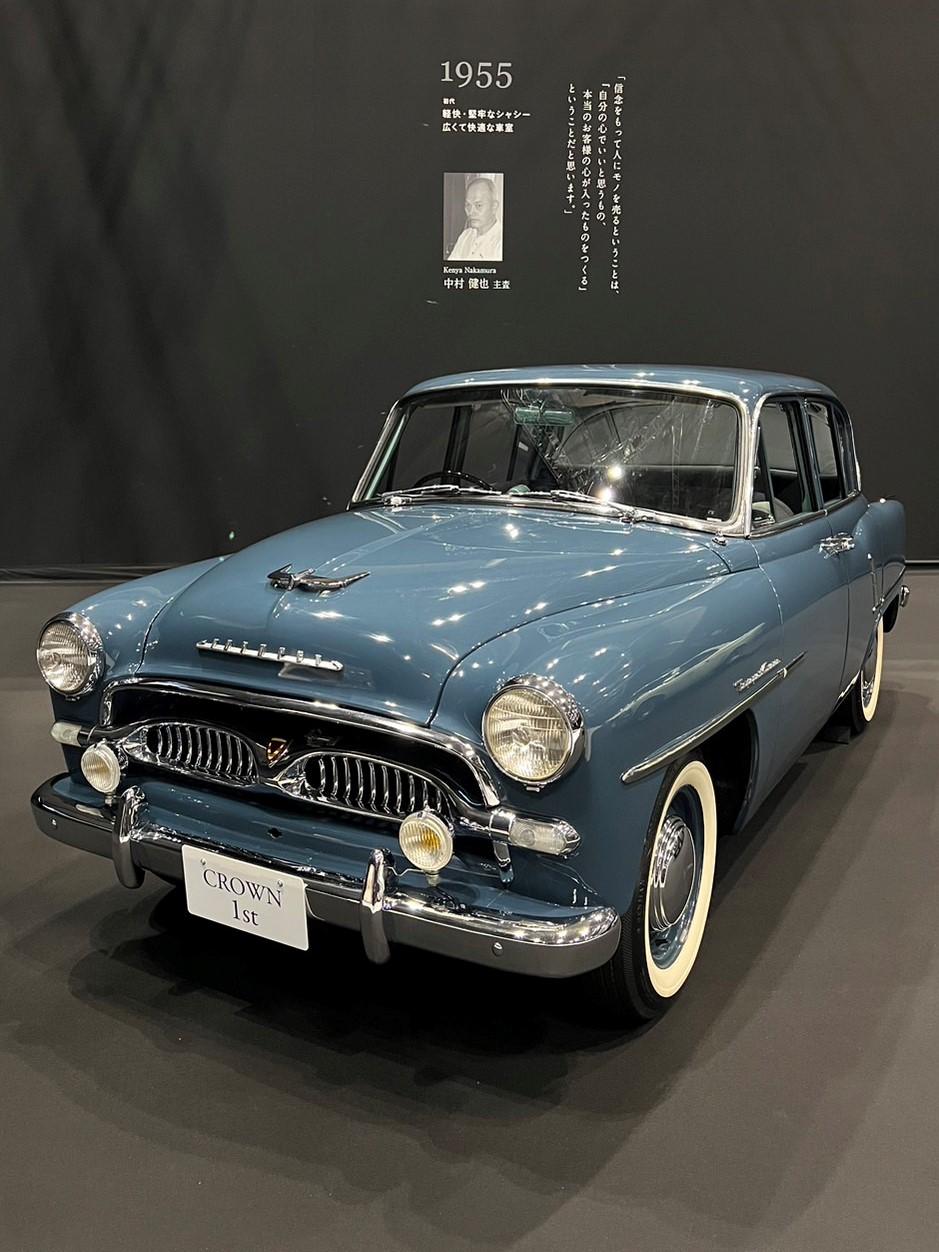
Inspecting every inch
Spurred on by the passion of the car’s owner, the restoration work finally got underway at the Motomachi Plant’s Global Production Center (GPC) on April 26, 2022, following a kickoff event the previous day.
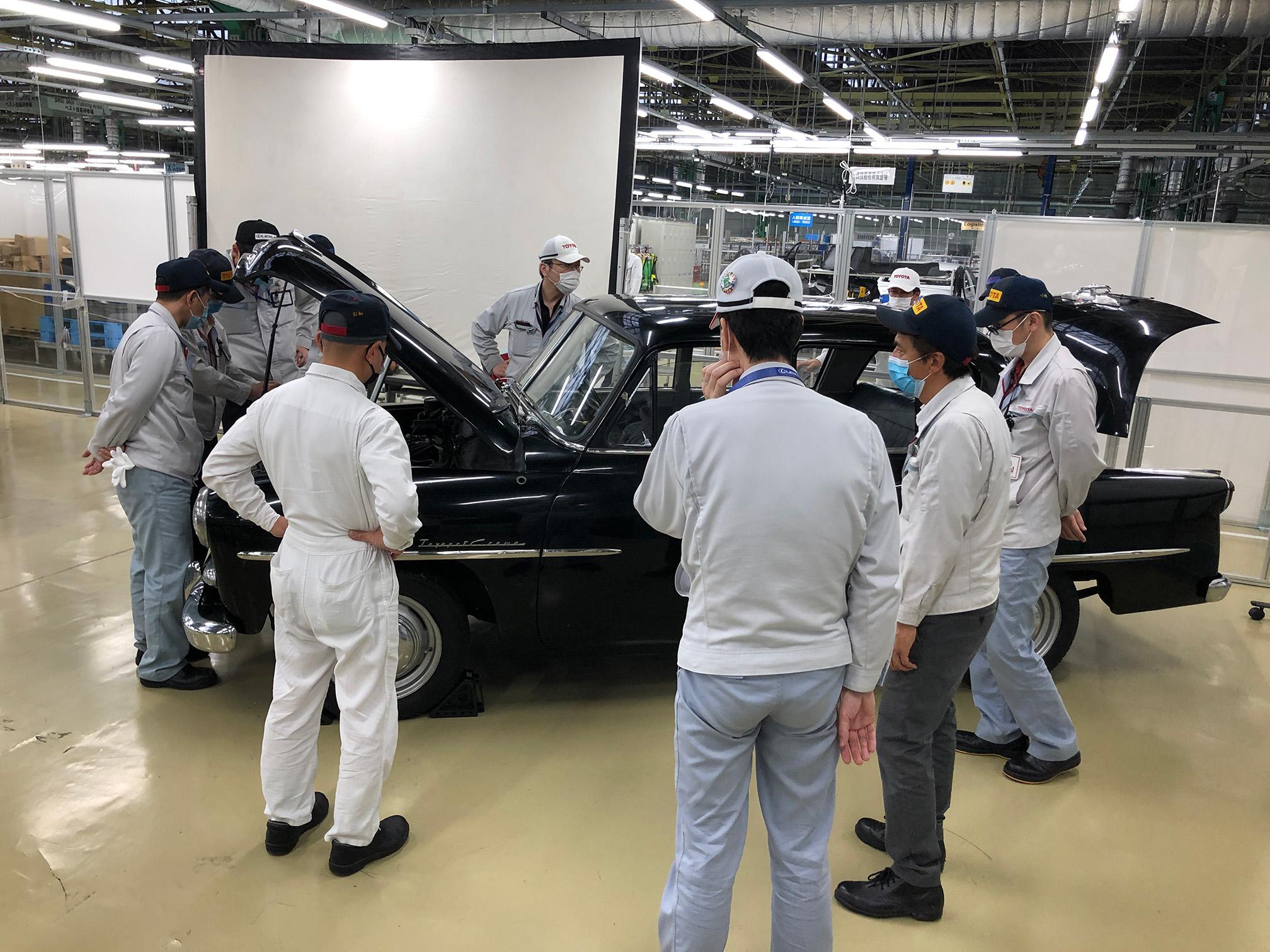
The 56-strong project team embarked on the first stage of the restoration – thoroughly checking the condition of the chic black vehicle.
This checking and later disassembly work was led by members responsible for assembling and inspecting the finished vehicle. They needed to understand the car’s original state to later put the restored parts back together and properly assess the work once everything was complete.

An essential part of restoration is understanding the car’s condition before work begins, along with a basic knowledge of the car being restored and ensuring that everyone is on the same page. Without an underlying shared vision of what the first-generation Crown is, it will be difficult for every member to move in the same direction.

Toyota made its first full-scale foray into stamping to fabricate the original Crown’s body, and the techni\quehas since become commonplace in car manufacturing. For this car, Toyota brought state-of-the-art press machinery from the United States. The introduction of this new technology set the first-generation Crown apart from earlier Toyota cars for the precision of its workmanship.
At the same time, many of the parts were made with materials and techniques that differ from those of today. The front suspension was Toyota's first double-wishbone and coil spring independent suspension system. Meanwhile, the rear suspension featured a rigid leaf spring setup rarely seen in passenger cars today.
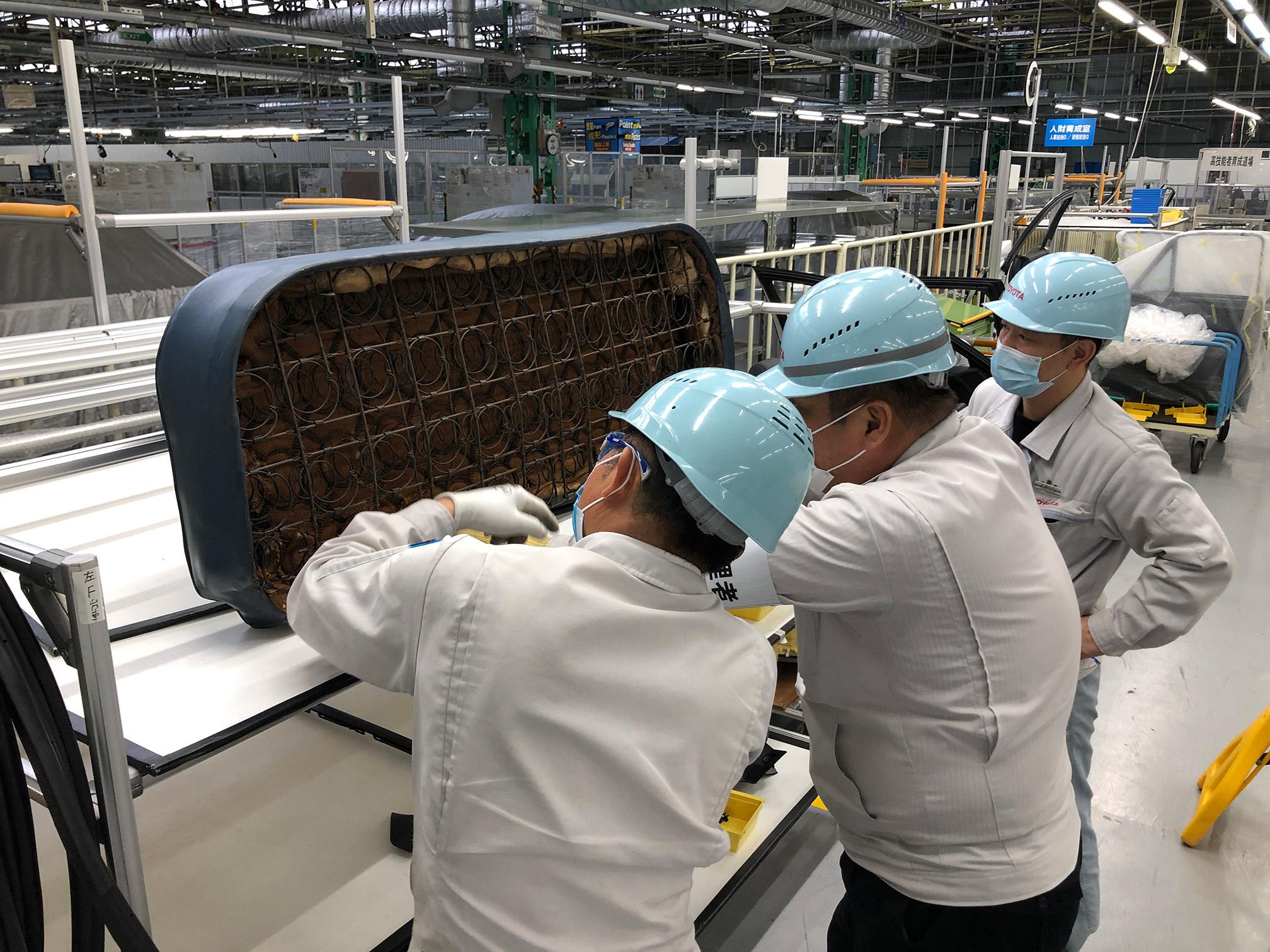
Similarly, whereas in modern cars the seats are made almost entirely of polyurethane, the originals used a combination of coil springs and wool felt. The engine intake system was built around a carburetor, now an outdated technology. Likewise, the brakes are all drum-type rather than discs. The bumpers were made of chrome-plated steel like the American cars that led the world in those days.
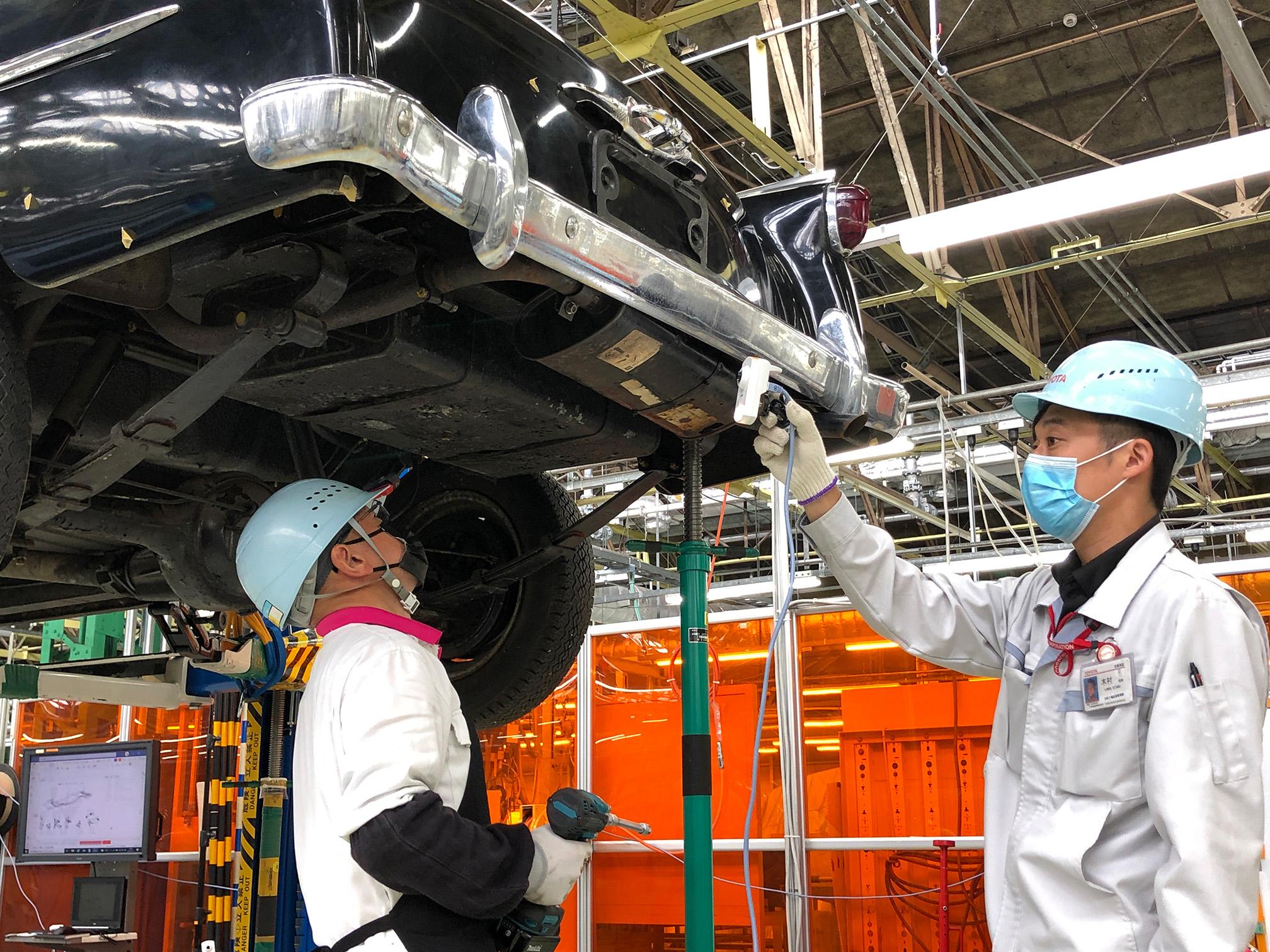
All these details were noted in the blueprints, spec sheets, and other documents, which the project members drew on as background research before starting their work.
Even so, to understand what the first-generation Crown was actually like as a car, they had to see it for themselves. Things aren’t always how they appear on paper. Not only was much of the work done by hand in those days, but some seven decades have passed since the car was built. Many parts in the design drawings are no longer found on the car.
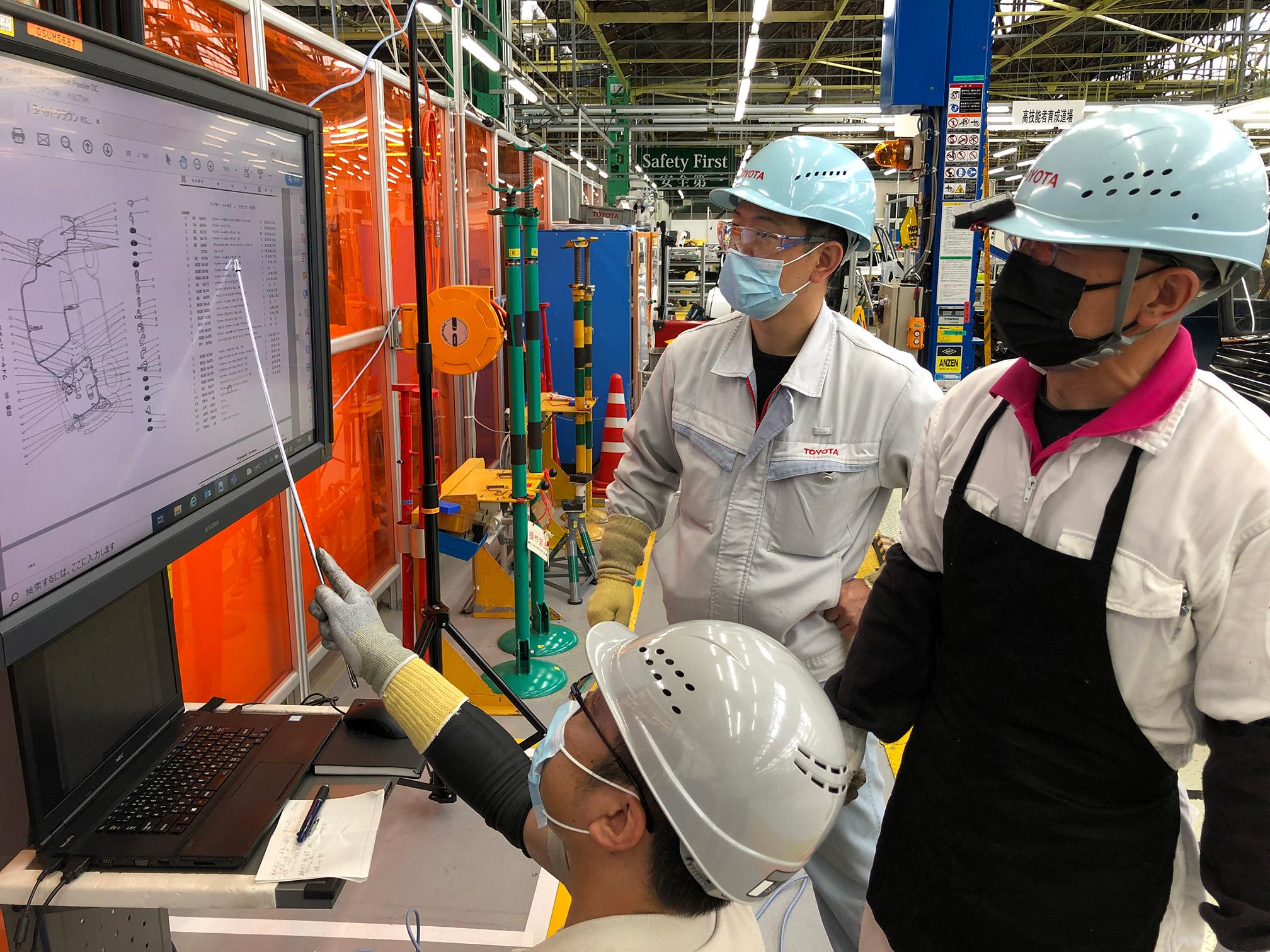
The Crown’s 1955 launch took place before everyone involved in the project, from the younger members in their 30s and 40s to the skilled veterans who form the team’s core, were born. Inspecting every inch of a car of this vintage was a new and invaluable experience for all members.
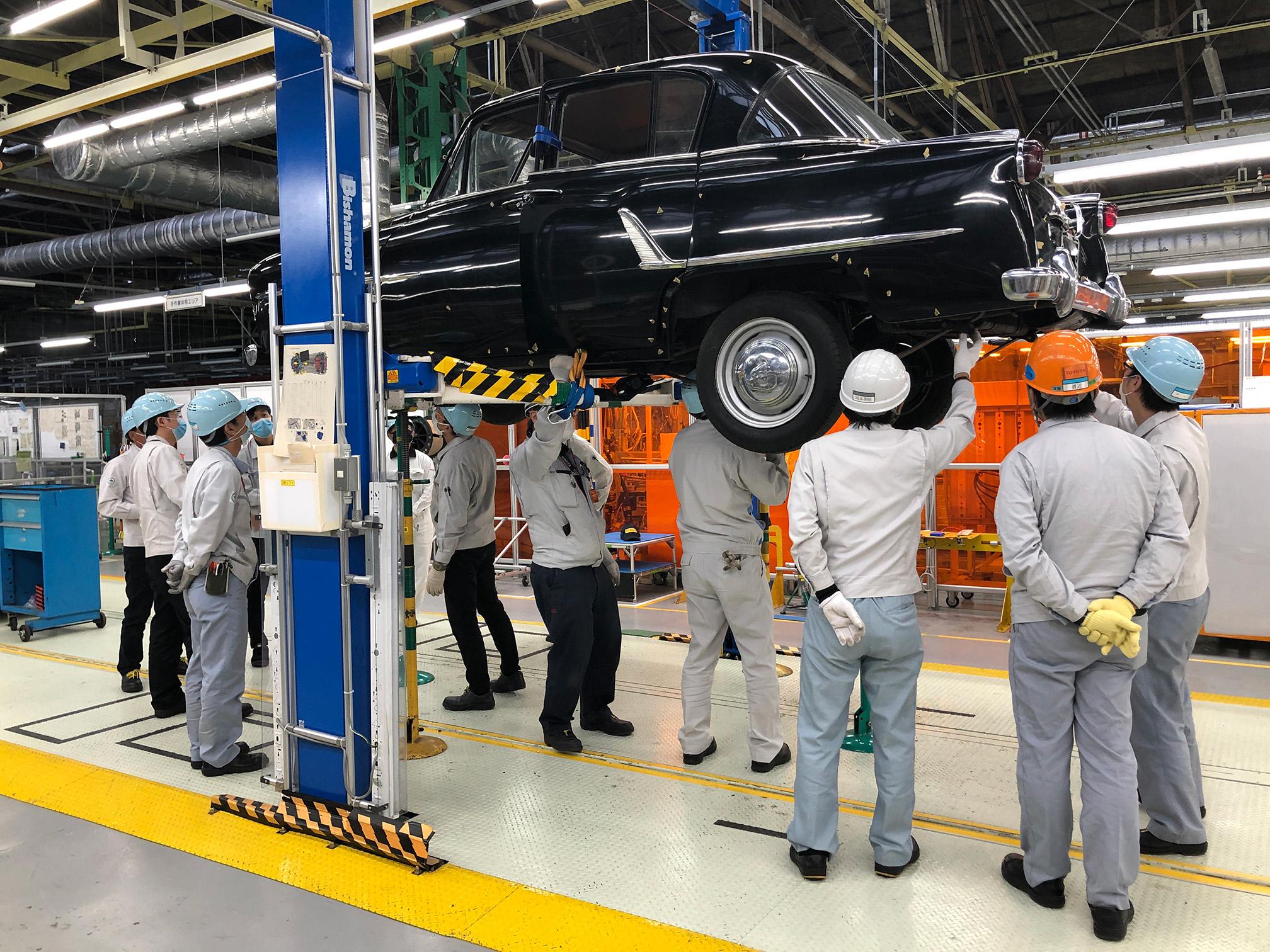
Team members opened the hood and trunk, as well as the coach doors that were a feature of the original Crown, checking the engine bay, cargo compartment, driver’s seat, and interior. The car was also lifted overhead to enable rigorous checks of the underside of the body and chassis.
Experiencing 60 years of car-making history
With the Crown nicely waxed up for the kickoff event, many of those who were there in person marveled at its beautiful condition, finding it hard to believe that the car was over 60 years old. However, upon inspecting the vehicle in detail from top to bottom, inside and out, they uncovered many signs of the intervening years.
One of these telltale signs of age is the evidence of past repairs around the body and frame, as well as the extensive corrosion on the lower part of the body. At this stage, the team did not go beyond visual checks.
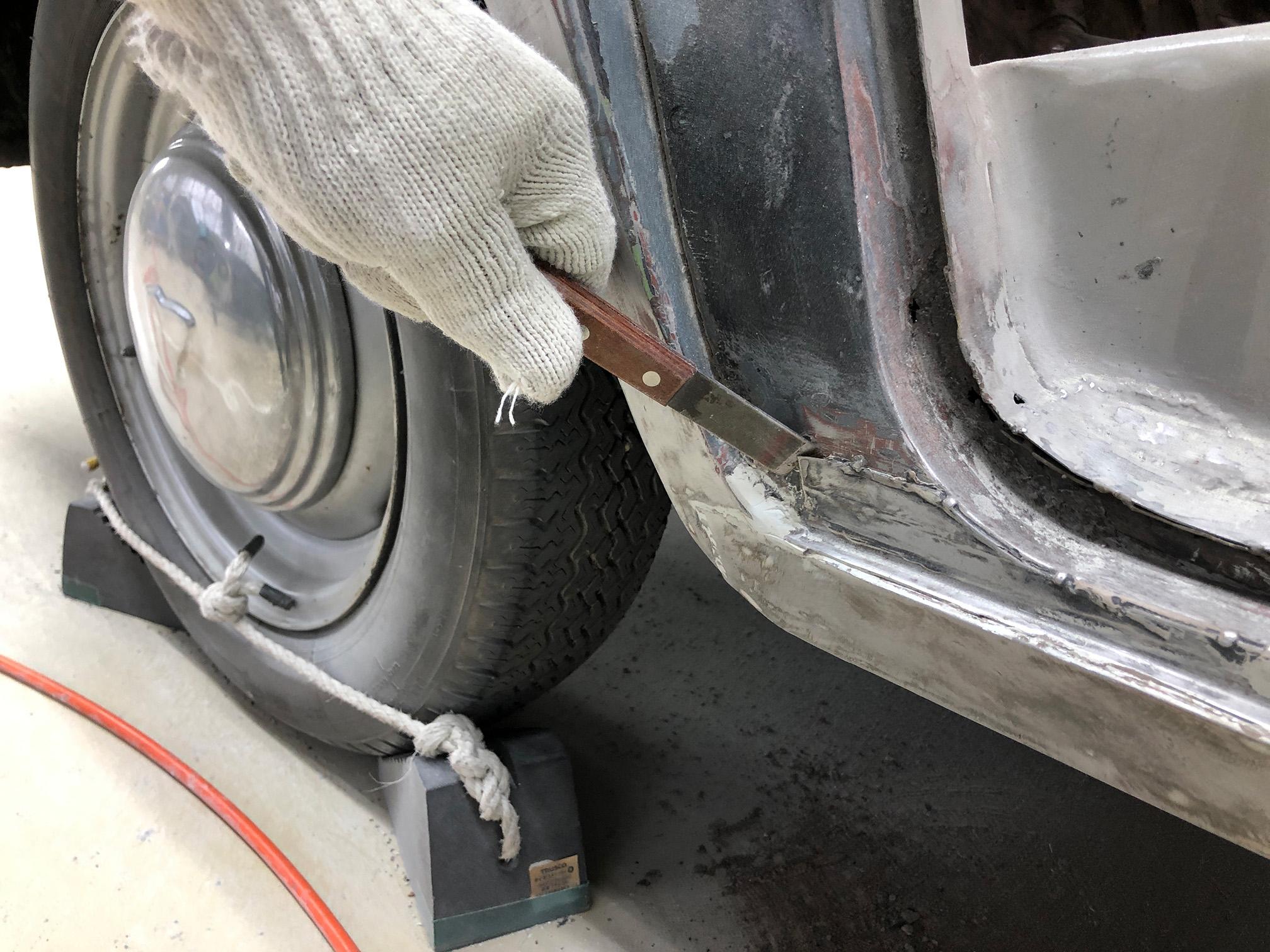
Nishida
Considering how much time has passed since the car was built and its many years on the road, corrosion on the body is to be expected, as are the many repairs to keep the car driving well. That said, the fundamental parts were better made than I expected, and in each component you could sense the soul of those who built it. I was particularly surprised to find how robust the frame was, the car’s “foundation.”

